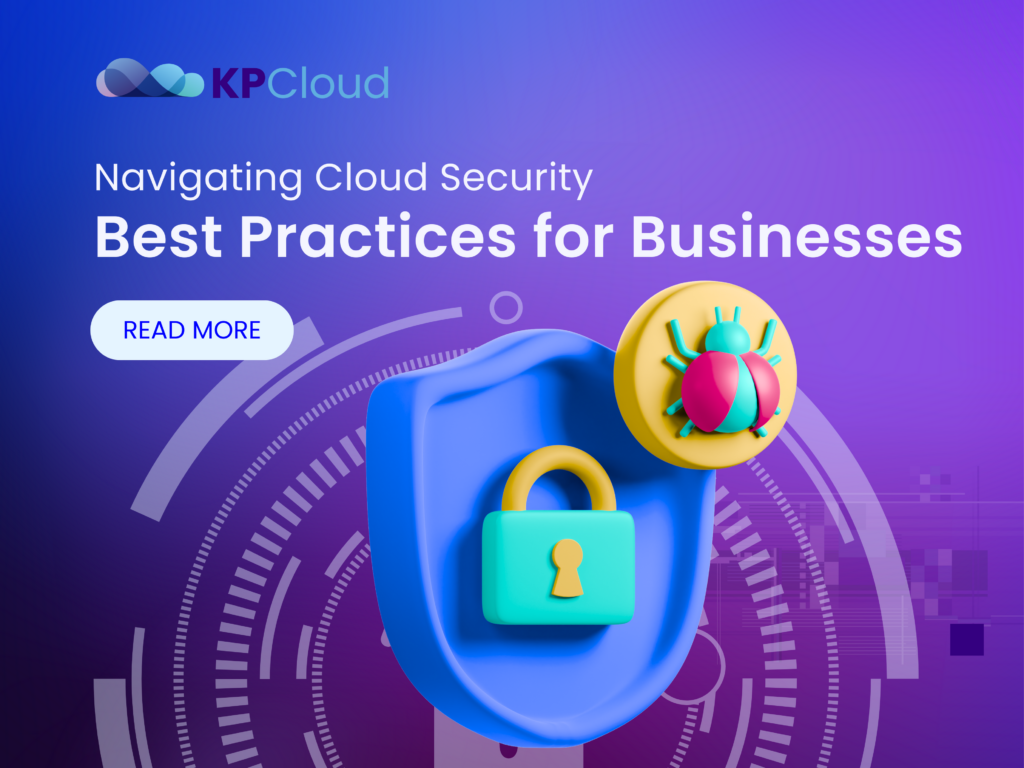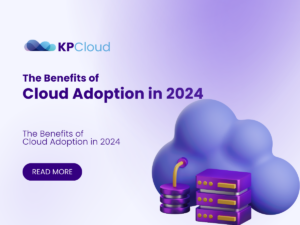Navigating Cloud Security: Best Practices for Businesses
Cloud security is a crucial aspect of any business that uses cloud computing services. Cloud security refers to the policies, procedures, technologies and controls that protect the data, applications and infrastructure of cloud-based systems from unauthorized access, malicious attacks, data breaches and other threats. Cloud security is not only the responsibility of the cloud service provider, but also of the cloud customer, who must ensure that they follow the best practices for securing their cloud environment.
Understand Your Shared Responsibility Model
As businesses continue to migrate to the cloud, security remains a top concern. While cloud providers offer robust security protections, securing your cloud environment is a shared responsibility between you and your provider. Understanding this shared responsibility model is key for effectively managing cloud security risks.
What the Shared Responsibility Model Means
The shared responsibility model outlines what security tasks are handled by the cloud provider and what remains the customer’s responsibility. Generally, the provider handles security of the cloud itself while the customer must secure their data, applications, operating systems, and more within the cloud.
For example, Amazon Web Services takes care of securing the underlying cloud infrastructure and foundation services. But customers are responsible for security in the cloud like data encryption, identity management, firewall configuration, and preventing threats through security monitoring and response. Microsoft Azure and Google Cloud operate on similar shared responsibility models.
Best Practices for Businesses
Managing your side of security responsibility is essential for safeguarding your cloud deployment. Here are key best practices:
Enable multi-factor authentication and centralized user identity and access controls for managing administrative access.
Use cloud data encryption capabilities for sensitive data like customer records and financial information.
Properly configure cloud security groups, whitelisting, blacklisting, and firewall policies to limit network exposure.
Implement security monitoring tools to detect threats, unauthorized behavior, vulnerable misconfigurations, and other risks.
Continually assess cloud resources, data flows, access points, and dependencies to minimize your attack surface.
Establish backup and recovery mechanisms in case of malware, ransomware, data loss scenarios, or disaster recovery needs.
Fulfilling Your Share
While complex, shared responsibility empowers organizations to customize cloud security aligned with your unique risk management priorities. Following leading practices for your domain ensures your data, applications and cloud environment remain protected. Speak to your cloud provider about available security offerings and tools to uphold your critical security and compliance obligations in the cloud.
Secure Cloud Access With Strict Access Controls
Access controls are a critical component of any cloud security strategy. Managing identities and limiting access is key for securing critical cloud resources and protecting against breaches. Businesses migrating to the cloud should implement strict access control policies and multifactor authentication to limit exposure.
Establish Least Privilege Access
Adopt a least privilege access model for all users across your cloud environment. Users should only be permitted access to the specific resources, data, and workloads necessary for their job duties. Unmonitored permissions lead to increased risk of misuse or unauthorized access. Continually review access needs and grant temporary elevated privileges only when required.
Implement Multifactor Authentication
Enforce multifactor authentication (MFA) for all cloud administrative accounts to prevent attacks leveraging stolen credentials. MFA requires users provide an additional verification factor when signing in, like biometrics or a rotating one-time code from an authenticator app. Apply blanket MFA policies across your cloud deployments for both internal user accounts and third party provider access.
Rotate Credentials Frequently
Alongside MFA, require password rotations and access key refreshes at least every 90 days across cloud platforms to reduce the risk of compromised credentials. Create password policies that enforce complexity standards and support integration with existing identity management systems where sensible.
Monitor User Behavior
Leverage native auditing tools and unified logging across cloud access points to monitor user activities, resource access, escalations of privilege, and changes in permissions. Cloud access logs feed into security information and event management (SIEM) solutions to detect anomalies and suspicious access patterns. Immediately flag unauthorized or abnormal usage for incident response protocols.
As with on-premises environments, identity and access represent critical control points in your cloud security posture. Adhering to zero trust access principles will help secure your most sensitive cloud data, resources and workloads against breach.
Protect Sensitive Cloud Data with Encryption Best Practices
Encryption of sensitive information like customer data, financial records, healthcare records, and intellectual property is essential for protecting cloud deployments. Encryption converts plaintext data into an indecipherable ciphertext only accessible to authorized parties, safeguarding information both at rest and in transit. As cloud migrations accelerate, neglecting encryption leaves data dangerously exposed.
Encrypt All Data at Rest
Apply granular policies for encrypting all cloud-based data stores at rest regardless of perceived sensitivity. Cloud providers offer proven encryption mechanisms securing data on cloud servers, databases, object storage, archives, file systems and backup repositories. Preserving data privacy requires management of encryption keys, either using provider tools or external key management.
Encrypt Data in Transit
Universal data encryption is equally critical for safeguarding information flowing between cloud services and users. Secure data in transit using standard network encryption protocols like TLS, SSL and IPSec based on data sensitivity assessments. Cloud web application firewalls and distributed denial of service protection should be layered to supplement in-transit protections against cyberthreats.
Retain Control of Encryption Keys
While convenient, relying exclusively on cloud provider encryption can present long term risks around keys and access controls. For certain applications, retain control over encryption methods and key management using external providers or hardware security modules for maximum information privacy. Perform due diligence around provider key handling procedures focusing on separation of duties, dual controls and routine key refreshes and rotations.
Growing reliance on cloud demands proactive steps around data encryption, especially for regulated industries like finance and healthcare. Robust encryption augmented with multifactor authentication, privileged access controls and stringent cyber policies safeguard cloud environments against breaches. As migrating to the cloud introduces new risks, purposeful planning for information protection remains imperative.
Centralize Identity Management for Secure Cloud Access
As cloud platforms multiply, businesses struggle to synchronize disjointed user identities and access controls across environments. This leads to compromised credentials, unauthorized access, and expanded attack surfaces. To shrink exposure, centralize identity and access rights through cloud-based identity providers.
Become Cloud-First
Adopt ‘cloud-first’ identity by standardizing on modern protocols like SAML and OAuth 2.0 for single sign-on (SSO). Ditch legacy on-prem protocols in favor of standards providing federated identity, automated user provisioning and support for multifactor authentication. Start by integrating Azure Active Directory or Okta for managing Office 365 or G Suite access.
Funnel Access Through APIS
Standardize access to infrastructure and data resources by funneling requests through provider API gateways. API gateways act as policy enforcement points, applying consistent authorization, threat protection and access activity logging across cloud access channels. Gateways simplify managing externalized identities and prevent direct exposure of cloud hosts and credentials.
Create a Governance Model
Formalize cloud access policies and procedures into an identity and access governance framework aligned to business objectives and risk tolerance. Outline oversight processes spanning identity lifecycles from onboarding to offboarding alongside access review cadence. Integrate cloud access governance with existing IAM systems where appropriate to prevent sprawl or gaps in coverage.
By centralizing identity early in cloud adoption cycles, businesses shrink their threat landscape. Migrating legacy identity hierarchies into unified cloud platforms closes vulnerabilities while powering workforce mobility and productivity through secure authentication.
Vet Cloud Providers to Minimize Security Risk
Selecting reputable and security-focused cloud providers is imperative for protecting business workloads migrated to the cloud. Perform thorough due diligence across vendors to choose trusted partners upholding rigorous cloud security and compliance standards.
Assess Security Track Records
Research providers’ historical security performance including breach histories, incident response efficacy, and transparency around past issues. Favor providers exhibiting lengthy uptime without major security failures. Review analyst research and press coverage documenting known vulnerabilities or misconfigurations across platforms.
Evaluate Certifications and Compliance
Understand compliance frameworks supported across candidate vendor environments. Most major cloud platforms today adhere to critical standards like SOC2, ISO 27001 and FedRAMP tailoring security control alignment specific to industry sectors and data types. Review current compliance attestations and certifications to validate security control rigor independent of marketing messaging.
Interview Providers
Discuss security architecture, controls, privacy policies and operational practices through vendor interviews. Inquire about encryption mechanisms for data at rest and transit, key management procedures, logging and monitoring capabilities, identity and access controls and background screening policies. Confirm providers allow security control customization without extensive proprietary platform dependencies.
Set Security Expectations
Formalize security and privacy expectations within service contracts before onboarding cloud platforms. Specify required security control enablement, breach notification commitments, geographic data handling restrictions and termination of access protocols. Perform periodic reviews against contractual obligations to validate consistent security enforcement over platform lifecycles.
Choosing trusted partners greatly reduces enterprise risk when migrating business critical systems to the cloud. Thorough provider evaluation and continuous oversight prevents headline-grabbing security failures undermining customer interests.
Watch Your Back Door: Monitoring Privileged Cloud Accounts
Privileged accounts capable of extensive modification or data access require extra vigilance in cloud environments prone to misuse or takeover. Adversaries aggressively target administrator credentials which serve as backdoor access points across networked platforms. Fail to actively surveil these accounts, and breaches can quietly materialize accessing your most sensitive systems or data.
Establish an Access Baseline
Inventory personnel holding privileged identities across cloud ecosystems like AWS, Azure and Google Cloud. Associate role-based access levels and documented justifications to identities as a baseline for monitoring. Continuously update this mapping to reflect changes in administrator staffing, access grants or revocations.
Deploy User Behavior Analytics
Feed privileged user activities like resource access into user behavior analytics (UBA) monitoring tools. UBA establishes historic baseline patterns for each user role to automatically flag anomalies indicative of compromised credentials or insider threats. For example, analytics may identify irregular overnight logins or atypical file deletions by common administrators for security investigation.
Enforce MFA and Rotation Rules
Mandate strict multifactor authentication (MFA) and periodic credential rotation requirements for privileged cloud accounts minimizing effectiveness of stolen passwords or keys. Identity access management (IAM) solutions centralize control over cloud superuser access and lifecycle management providing transparency across environments.
Privileged cloud identities serve as the keys to the kingdom for cyber thieves and rogue insiders. Combining MFA, behavior monitoring, and access governance provides necessary oversight to this cloud attack vector that often evades traditional perimeter defenses.
How KPCloud can help you maintain cyber security best practices for your business?
In today’s digital landscape, cloud computing has revolutionized the way businesses operate. Organizations are increasingly migrating their data and applications to cloud environments to harness benefits like scalability, flexibility, and cost savings. However, this shift also introduces new security challenges that must be addressed effectively. As a trusted cloud computing consultant, KP Cloud understands the critical importance of maintaining robust cloud security. In this blog post, we’ll explore essential measures and best practices that KP Cloud recommends for businesses to safeguard their cloud architecture and protect sensitive data and applications.
Cloud Security Shared Responsibility Model
KP Cloud adheres to the shared responsibility mode for cloud security. Here’s how it works:
1. Cloud Service Provider (CSP) Responsibility:
The CSP is responsible for securing the underlying infrastructure, foundation services, and physical components of the cloud.
This includes network security, data center protection, and foundational services like compute, storage, and networking.
2. Organization’s Responsibility:
Businesses are accountable for securing their data, applications, identity and access management, and cloud components under their control.
This involves implementing security measures within their cloud architecture.
Essential Measures for Cloud Security
1. Data Encryption
In Transit: Encrypt data as it moves between your organization’s systems and the cloud. Use secure protocols (such as HTTPS) and transport layer security (TLS) to protect data during transmission.
At Rest: Encrypt data stored in the cloud. Leverage encryption services provided by the CSP or use third-party encryption tools.
2. Strong Authentication and Access Controls
Implement multi-factor authentication (MFA) for user accounts. This adds an extra layer of security beyond passwords.
Define granular access controls to restrict permissions based on roles and responsibilities. Regularly review and update access policies.
3. Regular Backups and Testing
Regularly back up critical data and applications. Test the restoration process to ensure data integrity.
Consider automated backup solutions to minimize manual effort and reduce the risk of data loss.
4. Security Audits and Vulnerability Assessments
Conduct regular security audits to identify vulnerabilities and assess compliance with security policies.
– Use vulnerability scanning tools to proactively detect and address security weaknesses.
5. Train Employees on Cloud Security Best Practices
Educate employees about cloud security risks and best practices. Provide training on secure data handling, password hygiene, and recognizing phishing attempts.
Conclusion
Securing the cloud requires adjusting traditional on-premises security mindsets to the cloud’s distributed and dynamic nature. With strong foundational cloud security architecture governed by policies and best practices, organizations can harness the cloud’s benefits while ensuring the security of their most valuable data and applications.
At KP Cloud, we believe that proactive cloud security is a strategic investment. By partnering with us, businesses can confidently navigate the cloud landscape, protect their assets, and focus on growth and innovation.
For more insights and personalized guidance, reach out to KP Cloud today. Let’s secure your cloud journey together! 🌐☁️
Learn more about cloud security from our experts: KP Cloud.


